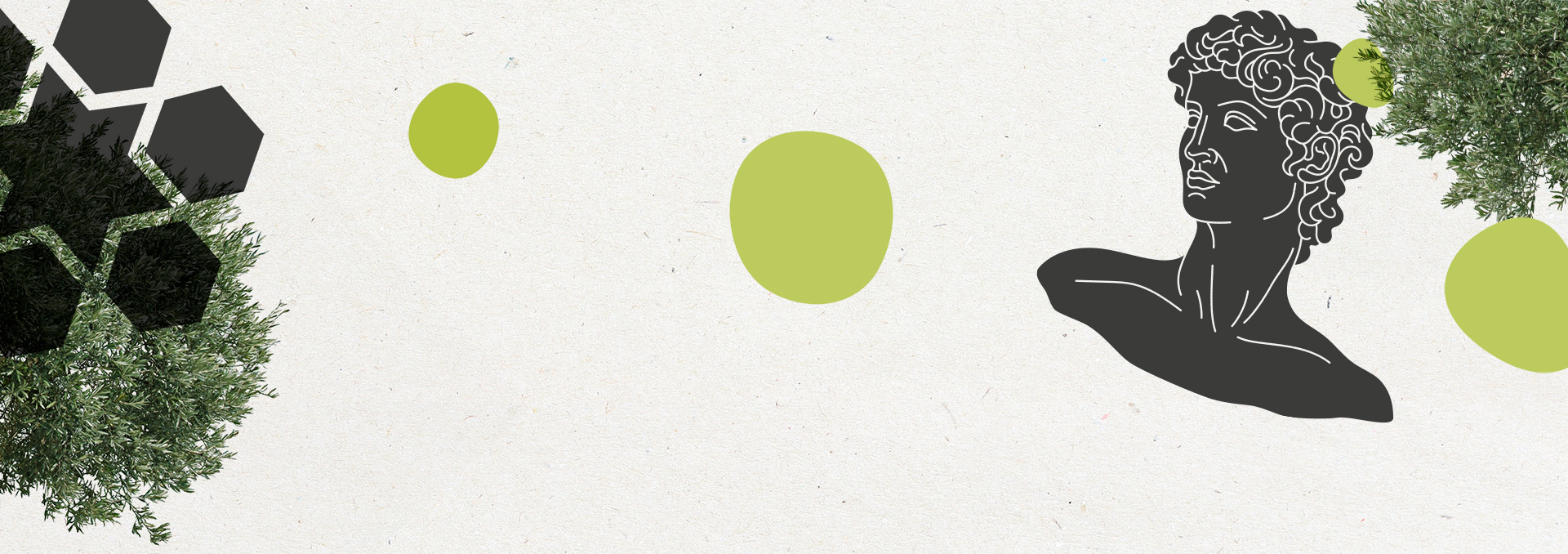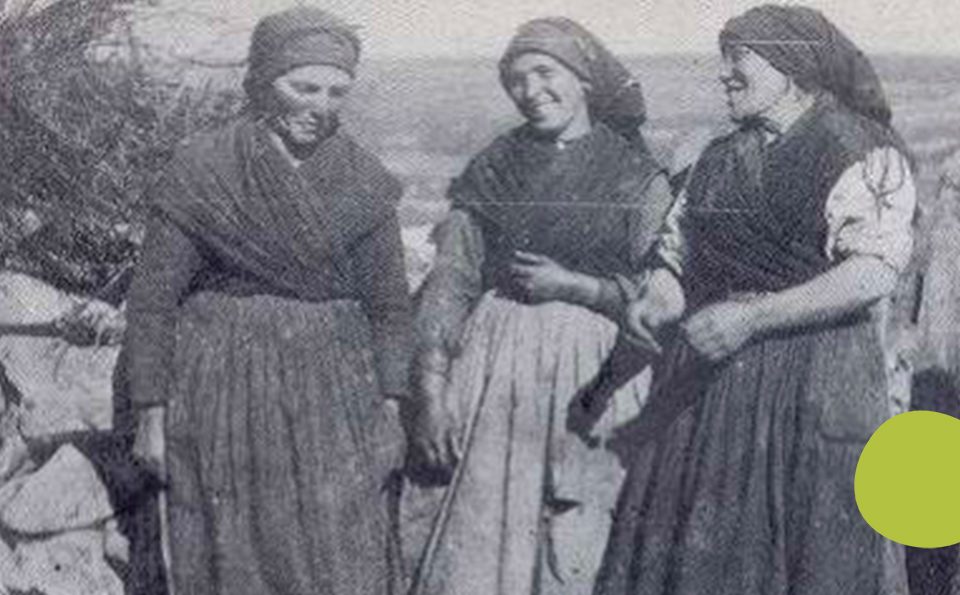HISTORY

Centuries of history working the land
Much of our land is a “sea of olive trees”, and the 66 million of these ancient planted trees in the province of Jaén are the proof.
Olive growing has conditioned its landscape, its culture and Jaén lifestyle as a whole: it has become one of the characteristics of Jaén and collective identity.
The origin of the olive cultivation is lost in time, coinciding and mingling with the expansion of the Mediterranean civilisations, but the Romans expanded the cultivation and production methods greatly, in fact it was an essential asset for them to sustain their empire. A clear example is Marroquies Bajos, an archaeological site in the city of Jaen. Cortijo los Robles Roman Villa is situated 2 km away from the urban area on a 2,5 hectare small rise, an area linked to olive oil production between the I and II centuries b. C.
Several archaeological surveys have made possible formulate different hypotheses about the introduction of olive growing in the High Guadalquivir Area, which underline the importance of this geographical area in the production and trade of olive oil route. This Roman villa was a rural Iberian settlement founded around the III a.C,, which undergone a great transformation in the second half of the II c. a.C. , right at the moment when a large oil mil with six presses was built, so this productive area existed until the second half of the III c. A.C.
Under the Arab rule, they went through a boom, partly due to the high level of consumption of the oil by the population and they influenced the spread of cultivation so much that the Spanish words for olive (aceituna), oil (aceite), almazara (mill) and many other words related to the olive production have Arabic roots.
In the XV th C. before the conquest of Granada by the Catholic Kings, the demand for olive oil by the Nasrid was supplied by a route of olive crops in different areas of Jaén. In 1473 the city of Jaen had a free market from where this product was transported to Cazorla and Segura Mountains towards the Mancha Region, the East of Spain and the Kingdom of Granada.
The planting of olive groves led to an increase in production during the XVIth c. in some parts of eastern Andalucía, highlighting the significant case of Jaén, whose symbolic cultivation was closely linked to a whole olive oil culture. This fact has been reflected from that time in various poetic, literary works, as well as in other artistic symbols that have survived until the present day.

Centuries of history working the land
Much of our land is a “sea of olive trees”, and the 66 million of these ancient planted trees in the province of Jaén are the proof.
Olive growing has conditioned its landscape, its culture and Jaén lifestyle as a whole: it has become one of the characteristics of Jaén and collective identity.
The origin of the olive cultivation is lost in time, coinciding and mingling with the expansion of the Mediterranean civilisations, but the Romans expanded the cultivation and production methods greatly, in fact it was an essential asset for them to sustain their empire. A clear example is Marroquies Bajos, an archaeological site in the city of Jaen. Cortijo los Robles Roman Villa is situated 2 km away from the urban area on a 2,5 hectare small rise, an area linked to olive oil production between the I and II centuries b. C.
Several archaeological surveys have made possible formulate different hypotheses about the introduction of olive growing in the High Guadalquivir Area, which underline the importance of this geographical area in the production and trade of olive oil route. This Roman villa was a rural Iberian settlement founded around the III a.C,, which undergone a great transformation in the second half of the II c. a.C. , right at the moment when a large oil mil with six presses was built, so this productive area existed until the second half of the III c. A.C.
Under the Arab rule, they went through a boom, partly due to the high level of consumption of the oil by the population and they influenced the spread of cultivation so much that the Spanish words for olive (aceituna), oil (aceite), almazara (mill) and many other words related to the olive production have Arabic roots.
In the XV th C. before the conquest of Granada by the Catholic Kings, the demand for olive oil by the Nasrid was supplied by a route of olive crops in different areas of Jaén. In 1473 the city of Jaen had a free market from where this product was transported to Cazorla and Segura Mountains towards the Mancha Region, the East of Spain and the Kingdom of Granada.
The planting of olive groves led to an increase in production during the XVIth c. in some parts of eastern Andalucía, highlighting the significant case of Jaén, whose symbolic cultivation was closely linked to a whole olive oil culture. This fact has been reflected from that time in various poetic, literary works, as well as in other artistic symbols that have survived until the present day.

Tres morillas m’enamoran en Jaén,
Axa y Fátima y Marién.
Tres morillas tan garridas
Y van a coger olivas
y hallávanlas
cogidas en Jaén,
Axa y Fátima y Marién (…).
*Three Morillas Romance ( “The three Morish girls Romance”), was first written in the Arab East in the IXth c., from where came to Al-Andalus (Spain) and here it was written in Spanish, finally there were some adaptations of the original version at the beginning of XVIth c.


Despite the XVIIth c economic crisis, the olive oil production continues to increase, due to a constantly inland demand, where some urban areas were created and they consumed it. In Jaén and in nearby villages such as Martos or Torredonjimeno, the mudéjar population grew small olive groves.
An example of these local olive oil markets was Jaén in 1699, when the city considered that 230 metric quintals of olive oil could supply the city, taking 87% for soap and 13 % for food.
In Andalusia during the XVIII th c, around 200.000 hectares were cultivated with olive trees. Although the growing labours were made with animals and by persons, Jaén considerably increases its land hectares for this purpose. At this preindustrial period, the farming sector and specially the olive oil production sector, the olive oil is not only used to human comsumption but also in many other activities: soaps made with disposable oils, firewoods for fuel or construction, or even leaves to built olive huts. It was a rural society that depended almost completely on the land and that agro system that supplied their needs.
The Spanish olive tree map was based on the construction of the railway network in the XIX th c, due to its inland cultivation. In Spain more than 1.700 km of disused railway infrastructure that have been transformed into cycling and hiking itineraries. The Via Verde or Green Via Verde, is an example and runs through a beautiful landscape of olive trees together with 9 metal viaducts from XIX along 55 km tour between Jaén and Alcaudete Railway Station

